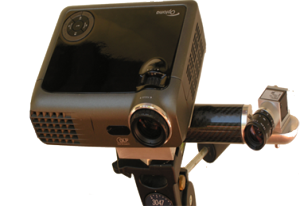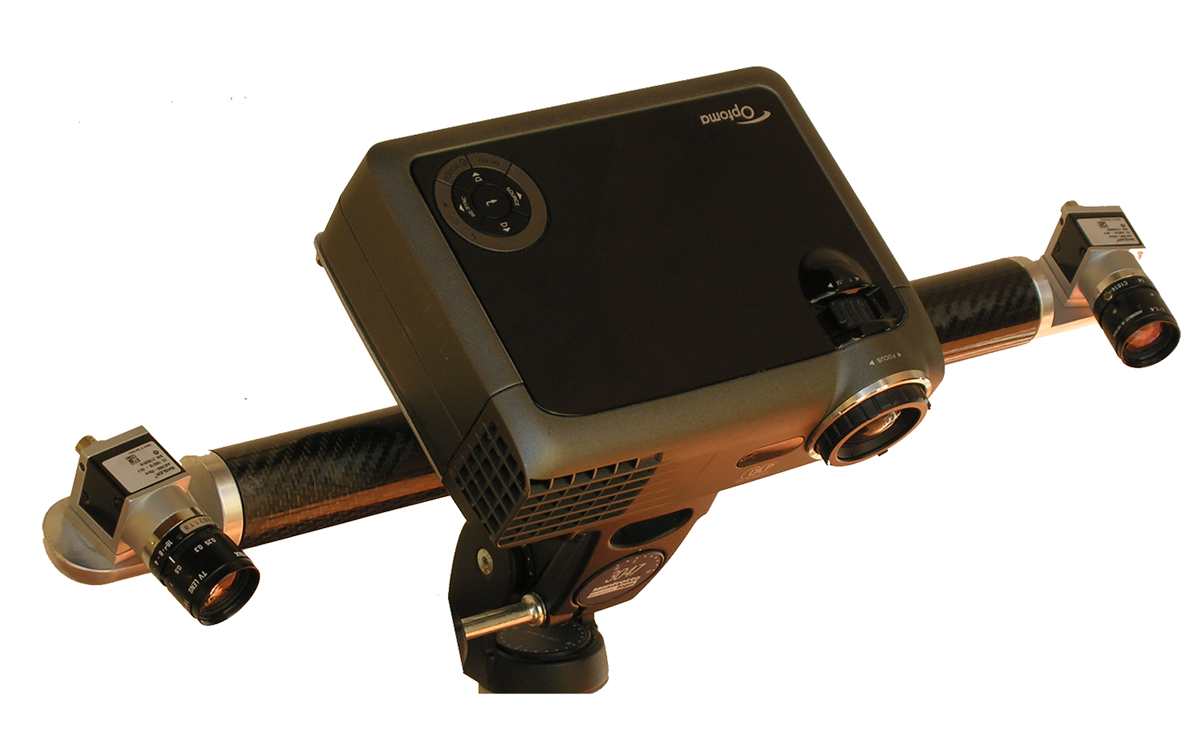If a desktop 3D printer is the ancestor of Star Trek’s replicator, then, the way I see it, is that a 3D scanner is the ancestor of the transporter, the machine that allows people to be transported as a stream of particles at light speed from one place to another in the Star Trek universe. A scanner can capture a physical object and transport it into the virtual world for it to be reassembled into physical reality somewhere else. It has taken some time, but 3D scanner prices are coming down, 3D scanning times are speeding up and the possible uses, coupled with 3D printing, are multiplying.
Energy 3D (previously Dynamic 3D) is a lean start-up (meaning it is entirely self-funded) from the Pisa province of Italy, in Tuscany, that wants to further open up the 3D scanner market by introducing two new low cost models — Ulysses and Prometheus — capable of 3D scanning objects as large as one meter to a high resolution (accuracy as high as 0.06 mm or 60 micron) and producing a colour point cloud in no more than 2 seconds.
Before addressing any tele-transporting needs of the future, affordable 3D scanners will prove ideal for growing the consumer physical photography market and, even before that, to allow professionals in many different fields (jewellery, shoes, engineering) to apply reverse engineering techniques and develop new products at a much lower cost than ever before.

“What makes our scanner stand out is the ability to scan traditionally difficult objects with ease,” says McKinley. “Scanning a shiny object like a DVD, or even jewellery and other metal objects, with its reflective surface can be done without coating spray. A marked difference from most professional grade scanners out there today. The same super-quick scan can be achieved for most shiny, reflective assets and even items with very dark surfaces.”
Energy 3D’s systems include industrial strength carbon fiber mounting for vibration control and either one or two Basler 2Mpx high definition cameras which, according to McKinley, allow for capture of even the smallest detail without requiring long set up times. The development process took over three years and the system has now been fully tested, according to the company and is ready to ship.
The company’s goal is not just to target end users but to form strong partnerships with other companies, both by providing the license to those wanting to integrate their solution in their own supplied hardware and by supplying an SDK to be integrated into any third party 3D scanner. All functionalities can be provided as a scan engine in a set of C/C++ libraries.





